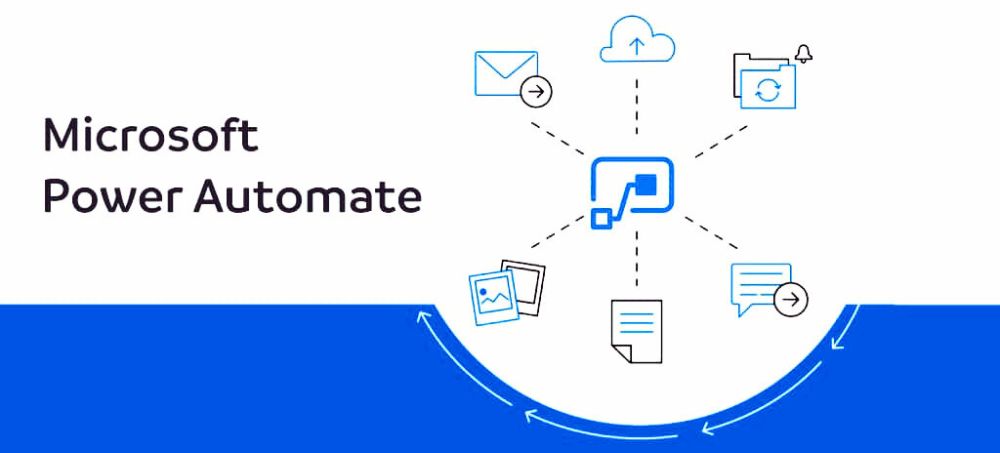Power Platform Development: Power Apps + Canvas
In the ever-evolving landscape of Power Platform Development, the decision between Power Apps + Canvas and Model-Driven apps is a crucial choice that can essentially influence the progress of your project. As businesses progressively influence the Power platform to make custom applications, understanding the subtleties between these two methodologies becomes vital. In this complete guide, we will investigate the various kinds of applications in Power Apps, dive into the particulars of Canvas applications, feature the qualifications among Canvas and Model-Driven applications, and give bits of knowledge to assist you with deciding if a Canvas app is the ideal decision for your unique project needs.
Types of Apps in Power Applications
Power Apps, as a piece of Microsoft’s Power Platform Development Company, enables organizations to make custom applications tailored to their one-of-a-kind necessities. Power Apps is made up of two main categories of apps: Canvas apps and Model-Driven apps.
1) Canvas Apps in Power Apps
A Canvas app is a blank canvas where application creators can outwardly plan the UI and client experience by relocating components onto a blank canvas. This approach gives the greatest adaptability, permitting developers to make profoundly modified applications that unequivocally match the ideal look and feel. Canvas apps are especially powerful when the plan and design of the application are basic parts of the client experience.
Key qualities of Canvas apps include:
- Drag-and-Drop Interface: Creators can put and arrange elements on the Canvas utilizing a natural initiative drag-and-drop interface.
- Customization: Canvas applications offer broad customization choices for UI components, data sources, and incorporations.
- Flexible Design: The design and construction of a Canvas application are very adaptable, making it reasonable for many applications.
2) Model-Driven Apps in Power Apps
Rather than Canvas apps, Model-Driven apps are based on a predefined data model, giving a more organized way to deal with application development. The data model characterizes the application’s substances, connections, and business logic. Model-driven applications are especially reasonable for situations where the data structure is the point of convergence of the application.
Key attributes of Model-Driven applications include:
- Structured data Model: Model-driven applications are based on a pre-characterized information model, guaranteeing consistency and soundness in information portrayal.
- UI Generation Automated: The UI is consequently produced in light of the fundamental information model, decreasing the requirement for manual planning.
- Business Logic Coordination: Model-driven applications consider the fuse of mind-boggling business rationale straightforwardly into the information model.
AI & ML on the Microsoft Power Platform for Unseen Insights
How dominating AI & ML on the Microsoft Power Platform can raise your data game, giving significant, concealed experiences that drive business development.
Canvas Applications Inside and Out: Releasing Innovativeness and Adaptability
What is a Canvas App in Power Apps?
A Canvas application resembles a blank canvas for developers and fashioners to make a custom UI. It permits you to begin with a clear application and develop it starting from the earliest platform, each component and element as per your particular prerequisites. This method allows for unmatched creative freedom but may necessitate a deeper comprehension of app design principles.
Key Qualities of Canvas Applications:
- Visual Design Freedom: Apps built with Canvas give users complete control over the application’s layout and visual design. Planners can place and design components as they see fit.
- Data Source Integration: Canvas apps integrate seamlessly with a variety of databases, APIs, and cloud services thanks to their support for a wide range of data sources.
- Adaptable Client Experience: With Canvas applications, you have the adaptability to make a custom-fitted client experience by planning each part of the application, from buttons and structures to displays and graphs.
- Responsive Plan: Canvas applications are intended to be responsive, guaranteeing a steady and easy-to-use insight across various gadgets.
Model-Driven versus Canvas: Understanding the Differences
Now, let’s look at the main differences between Canvas and Model-Driven apps to help you decide which one is best for your project.
1) Plan Reasoning
- Canvas Application: Built from scratch, Canvas applications offer unrestricted design freedom. The app’s layout, appearance, and functionality are entirely in the hands of the developers.
- Model-Driven Application: Model-Driven applications are planned around a pre-characterized information model. The UI is naturally created given this model, giving a more organized and normalized approach.
2) User Friendly User Interface
- Canvas Application: The UI is manually designed by putting components on the canvas. When a custom and visually appealing user interface is a priority, this approach is ideal.
- Model-Driven Application: The UI is naturally produced given the hidden data model. This can accelerate improvement for situations where the information structure outweighs UI customization.
3) Extensibility and Customization
- Canvas Application: Maximizes flexibility and customizability. Custom controls, intricate workflows, and adapting the app to changing requirements are all options open to developers.
- Model-Driven Application: While customization is accessible, it could be more obliged contrasted with Canvas applications. Model-driven apps, on the other hand, benefit from built-in features that make development easier.
Would it be a good idea for me to utilize a Canvas Application?
Deciding whether to utilize a Canvas application relies on a few elements:
- UI Customization Needs: If your project requires a profoundly redone and outwardly engaging UI, a Canvas application is logically the better decision.
- Artistic liberty: If your development group values artistic liberty and needs to plan the application starting from the earliest platform, a Canvas application lines up with this methodology.
- Explicit Data Structure Focus: If your undertaking revolves around a particular information model and underlines organized information portrayal, Model-Driven applications may be a more reasonable decision.
- Conditions for integration: If your application needs to incorporate a great many data sources, APIs, or external services, Canvas applications offer the adaptability to accommodate different joining needs.
How a Power Apps Platform Development Company Benefits Your Business
1) Tailored Solutions for Your Exceptional Necessities
A Power Platform Development Company starts by understanding the complexities of your business cycles, difficulties, and goals. This thorough analysis takes into consideration the formation of bespoke solutions that adjust unequivocally to your necessities, guaranteeing the greatest effect and worth.
2) Development at a low cost
Starting from scratch with applications and solutions can take a lot of resources. By utilizing the Power Apps Platform, a development company can convey arrangements quicker and at a lower cost, expanding its profit from the company.
3) Dexterity and Flexibility
The business scene is dynamic, and your innovation arrangements need to appropriately adjust. Your business can quickly iterate on applications, respond to shifting requirements, and stay ahead of the competition thanks to Power Apps Platform Development’s agility.
4) Improved Collaboration and Correspondence
Power Platform cultivates joint effort among groups by giving a bound-together stage to application improvement, information investigation, and interaction robotization. A Power Apps Platform development company can break down organizational silos by ensuring seamless departmental integration and communication.
5) Constant Help and Streamlining
Drawing in with a Power Platform development company isn’t just about beginning execution. It includes continuous help, updates, and enhancement to guarantee that your answers advance with your business needs. This proactive methodology guarantees long haul achievement and supportability.
6) Consistence and Security
Information security and consistency are non-debatable parts of present-day business activities. A trustworthy Power Platform development company focuses on safety efforts, guaranteeing that your applications and information stick to industry principles and administrative prerequisites.
Conclusion: Choosing the Right Tool for Your Power Apps Platform Project
In the ever-evolving world of Power Platform development, choosing between Model-Driven apps and Power Apps + Canvas should be based on the specific needs of your project. For a Power Platform development company, understanding the subtleties between these tools is fundamental to conveying fitted answers for clients. Businesses can improve the overall customer experience and unlock new levels of efficiency by utilizing the Power Platform’s capabilities.
Whether you are hoping to smooth out work processes, make natural applications, or get significant bits of knowledge from your information, a Power Platform development company is your partner in accomplishing these extraordinary objectives. Embrace the force of cooperation and development with a devoted accomplice who figures out the special requirements and yearnings of your business. Eventually, both Canvas and Model-Driven applications will offer strong capacities inside the Power platform, and the decision ought to be driven by an intensive evaluation of your project objectives, client experience needs, and development group inclinations.



